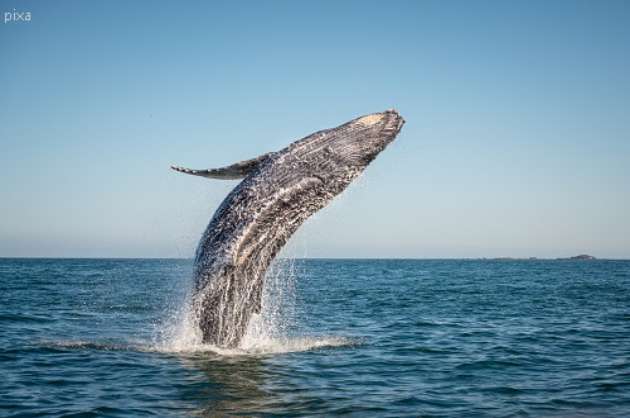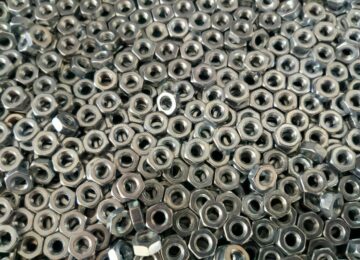Anupama Nair
www.mediaeyenews.com
Over the next few billion years, single-celled organisms fused and became multicellular; body plans diversified and radiated, exploding into an array of invertebrates. Yet all this abundance and life was restricted only to the seas, and a large and bountiful land was unused. Somewhere around 530 million years ago, there is evidence that centipede-like animals began to explore the world above water, and around 430 million years ago, plants and were found on the bare earth, creating a land rich in food and resources, while fish evolved from ancestral vertebrates in the sea. It was another 30 million years before those prehistoric fish crawled out the sea and began the evolutionary lineage we sit atop today. To understand life as we know it, we have to look back at where we came from, and understand how our ancestors braved a brand- new world above the waves.
It was a small step for a fish, but a giant leap for animal kind. Though, looking at modern fish species, it's not so hard to envisage the slow adaptation to life out of the sea. A number of fish exhibit traits which are not unlike those of the first tetra pods, the four-limbed vertebrates that first tried to live on land, and were the direct descendants of ancient fish. The gurnards, are known for their ‘walking’ behaviors. Similarly, mudskippers have adapted anatomically and behaviorally to survive on land. Not only can they use their fins to skip from place to place, they can breathe through their skin like amphibians, allowing them to survive when they leave water habitat. Walking catfishes have modified their respiratory system so much that they can survive days out of water. But all of these are only glimpses at how the first tetra pods began, as none of these animals has fully adapted to life on land. To understand how tetra pods achieved such a feat, we must first understand the barriers that lay between their life under the sea and the land above that awaited them.
Living in air instead of water has its own difficulties. Locomotion is only one problem, though as evolution in a number of lineages has shown, not as big a problem as you might think. Still, while mud skippers and catfish seem to walk with ease, the same cannot be said of our ancestors. Some of the earliest tetra pods, like ‘Ichthyostega’ were quite cumbersome on land, and likely spent most of their time in the comfort of water. These first tetra pods came from an ancient lineages of fishes called the Sarcopterygii or Lobe-Finned Fish, of which only a few survive today. As the name implies, these animals have meaty, paddle-like fins instead of the flimsy rays of most modern-day fish species. However, these early tetra pods had to develop more than a new way to walk as their entire skeletons had to change to support more weight, as water supports mass in a way that air cannot. Each vertebrae had to become stronger for support. Ribs and vertebrae changed shape and evolved for extra support and to better distribute weight. Skulls disconnected, and necks evolved to allow better mobility of the head and to absorb the shock of walking. Bones were lost and shifted, streamlining the limbs and creating the five-digit pattern that is still reflected in our own hands and feet. Joints articulated for movement, and rotated forward to allow four-legged crawling. Overall, it took a long 30 million years or so to develop a body plan fit for walking on land.
At the same time, these cumbersome land dwellers faced another obstacle, the air itself. With gills adept at drawing oxygen from water, early tetra pods were ill-equipped to breathing air. While many think that early tetra pods transformed their gills into lungs, this actually isn't true, however, it was the fish's digestive system that adapted to form lungs. The first tetra pods to leave the water breathed by swallowing air and absorbing oxygen in their gut. Over time, a special pocket formed, allowing for better gas exchange. In many fish, a similar structure called a swim bladder exists which allows them to adjust buoyancy in the water, and thus many have hypothesized that tetra pod lungs are co-opted swim bladders. We do not know when tetra pods developed lungs like other land-living animals. While the only surviving relatives to early tetra pods the lungfishes also possess lungs many fossil tetra pods don't seem to have them, suggesting that lungfish independently evolved their ability to breathe air. However, what we know is that it wasn't until around 360 million years ago that tetra pods truly breathed like their modern descendants.
The solution to land's dry nature was to encase eggs in a number of membrane layers, in what is now known as an amniote egg. Even our own children reflect this, as human babies still grow in an amniotic sac that surrounds the fetus, even though we no longer lay eggs. This crucial adaptation allowed animals to cut ties with watery habitats, and distinguishes the major lineage of tetra pods, including reptiles, birds and mammals, from amphibians. These crucial adaptations to tetra pod skeletons and anatomy allowed them to conquer the world above the waves. Without their evolutionary ingenuity, a diverse set of animals, including all mammals, would not be where they are today. Even today we still do not understand the ecological settings that drove these early animals out of the sea. Did dry land offer an endless bounty of food not to be overlooked? Perhaps, but there is evidence that our ancestors braved the dry world very early on, even before most terrestrial plants or insects, so it's possible earth was barren once. Was land important for some yet undetermined reason? The answer is we may never know. But as we reflect upon our beginnings, we have to give credit to the daring animals that began the diverse evolutionary lineage which we are a part of. While we may never understand why they left water, we ought to be thankful they were brave enough to do so!.




























